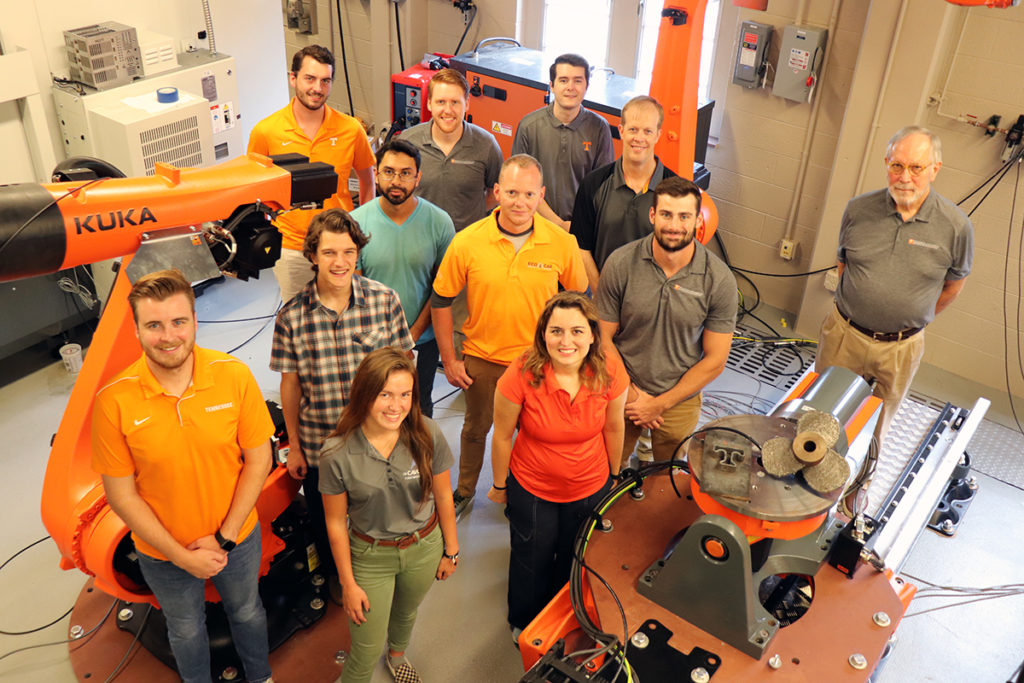
The fabrication of large, complex metallic structures, especially at the point of use, is a persistent challenge for the US Navy.
Timely repairs involving replacement of large parts can be limited by supply chain constraints from manufacturing to delivery and can impact mission effectiveness. Emerging hybrid manufacturing—which combines additive and subtractive manufacturing—offers important opportunities to address these challenges and is a focus area within the Tickle College of Engineering.
Professors Bill Hamel and Tony Schmitz and Associate Professor Bradley Jared are addressing these challenges in a new two-year $1.83 million research project, with the objective of achieving integrated and iterative hybrid manufacturing of large metal parts involving multiple alloys.
The project also includes the creation of unique state-of-the-art large-scale hybrid metal manufacturing research testbed in the Nathan W. Dougherty Engineering Building. The overall $4 million effort, a collaboration with Oregon State University, is funded by the Office of Naval Research.
“Several relevant part types, materials, and geometries are being considered that will challenge both the robotic wire-arc robotic additive printing and multi-axis milling processes included in the testbed,” said Hamel.
The ultimate goal is to integrate the steps into an automated workflow that can produce dimensionally accurate final parts. Structured light scanning will be used to create digital image representations that will allow the part to be moved back and forth from printing and machining while maintaining dimensional accuracy.
The testbed workflow will be managed by a supervisory control system that assures safe operations and generates a complete digital twin of a particular part build from start to finish.
Preliminary studies on materials, processes, and methods in printing, scanning, and machining are underway, and the team has manufactured some initial parts in mild steel.
All of the major equipment for the hybrid manufacturing testbed has been procured, and initial operations are expected to commence early this fall. In addition to addressing Navy interests, the project is providing MABE faculty and graduate students a unique opportunity to work at the cutting edge of hybrid manufacturing development in a real-world context.